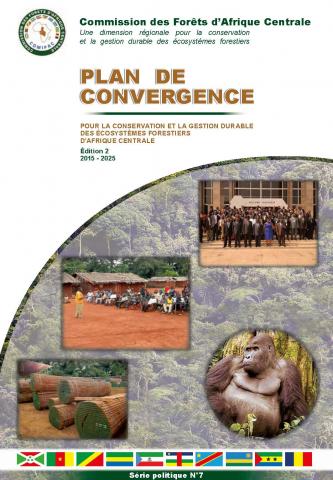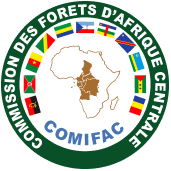 The Commission of the Forests of Central Africa (COMIFAC) is equipped with a convergence plan sub-regional level which is the reference framework and coordination of all the interventions in the field of conservation and sustainable management of forest ecosystems in Central Africa. It also contributes to the strengthening of the actions undertaken by the Member States of the COMIFAC and the other actors of development. The first edition of the said Convergence Plan (2005-2014) was adopted in February 2005 in Brazzaville in the Congo in the course of the Second Summit of Heads of State of Central Africa on the forests. To ensure the success of its implementation, the said Plan has been the subject of a planning triennial operational following the phases 2006-2008 and 2009-2011.
The Commission of the Forests of Central Africa (COMIFAC) is equipped with a convergence plan sub-regional level which is the reference framework and coordination of all the interventions in the field of conservation and sustainable management of forest ecosystems in Central Africa. It also contributes to the strengthening of the actions undertaken by the Member States of the COMIFAC and the other actors of development. The first edition of the said Convergence Plan (2005-2014) was adopted in February 2005 in Brazzaville in the Congo in the course of the Second Summit of Heads of State of Central Africa on the forests. To ensure the success of its implementation, the said Plan has been the subject of a planning triennial operational following the phases 2006-2008 and 2009-2011. With regard to the second edition of this convergence plan for the ten-year period 2015-2025, it comes to be developed following a review process that has led to its validation in July 2014 by the Ministers of the COMIFAC. With a vision and a goal, the Convergence Plan 2 has a strategic framework declined in six (6) Priority Axs of intervention and three (3) transverse axs.
The priority axs of intervention are: (i) Harmonization of Forest and environmental policies; (ii) management and sustainable exploitation of forest resources; (iii) conservation and sustainable use of biological diversity; (iv) fight against the effects of climate change and desertification; (v) socio-economic development and participation in multi-actors; (vi) Funding Sustainable. The transverse axs are: (i) Training and capacity-building; (ii) Research and Development (iii) communication, awareness, information and education.
The fact of its linkage to conventions, treaties and international agreements, regional and sub-regional to which the countries of the space COMIFAC have adhered, the implementation of this Plan of convergence 2 must respect the fundamental values set out in the Yaoundé Declaration adopted in March 1999 by the Heads of State of the sub-region at their first Summit on Forests. It is (i) to the respect of human rights and the rights of indigenous peoples, (ii) the taking into account of the genus, (iii) cooperation, partnership and solidarity and (iv) of the good governance.
Moreover, a certain number of assumptions (conditions of success) that can influence the achievement of the objectives of the Convergence Plan 2 have been issued. It is among others: (i) the maintenance of the political commitment affirmed since the Yaoundé summit, (ii) the strengthening of the appropriation of the Convergence Plan by all stakeholders, (iii) the effectiveness of sustainable funding, (iv) of the alignment and the support of international partners for the implementation of the Convergence Plan and finally (v) maintenance of conditions of peace and security.
In the logic of the approach of the results-based management (RBM), each priority axis of intervention is available in strategic objectives, and then into operational objectives and expected results. The achievement of the strategic objectives in the long term will contribute to the realization of the vision, while the operational objectives should guide the actions that all stakeholders will lead in the short and medium term to contribute to the achievement of the strategic objectives. Performance indicators (indicators of impact and results indicators) have been formulated to measure the levels of achievement of strategic and operational objectives respectively.

